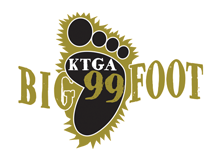July 1, 2021 |
The impacts from last summer’s fire outside Hanna are still evident. The South Central Sage Grouse Working Group this week declared a “soft trigger” for the Hanna Core Area, in part because 13,000 acres of habitat likely were lost to the 316 Fire. Also contributing to the decision, was a decline in the annual bird counts at known leks.
The working group met in Saratoga on Tuesday. Leslie Schrieber a wildlife biologist with Wyoming Game and Fish in Greybull chaired the meeting. Schreiber compared the difference between a soft trigger and a hard trigger to weather forecasting terms: a storm watch versus a storm warning.
Schreiber said the average number of sage grouse observed over the last three years in the Hanna Core Area is low compared to the previous 20 year average. The statistical model Schreiber used included a count of male birds at specific leks. It catalogued population swings over two decades, and compared the deviations to fluctuations of statewide population counts. The analysis showed the Hanna bird population is both lower than historical averages and changing faster than average statewide declines.
Given the comparative data on bird counts and last year’s loss of habitat, Schreiber steered the 10-member group toward the recommendation of a soft trigger for the Hanna Core Area.
Audio PlayerScheiber’s assessment drew support from Daren Long, also with Wyoming Game and Fish. Long said the habit loss last year from the 316 fire was significant.
Audio PlayerSaratoga Wildlife Biologist Teal Caufaude is a member of the working group. Caufaude told Bigfoot 99 after the meeting that Tuesday’s decision by the South Central Working group is the first step in a complicated process. The next step is a meeting next week of the Bates Hole Shirley Basin Sage Grouse Working Group, which look at much of the same data before making its own determination.
Audio PlayerLocal working groups around Wyoming are charged with making recommendations only. They do not look at causal factors or remedies. Technical teams at the state level step in once a soft or hard trigger is recommended by a local working group.
Joe Parsons, the director of the Encampment-Rawlins-Saratoga Conservation District, is also a member of the South Central Sage Grouse Working Group. Parsons said because a state team is brought in, soft or hard triggers bring their own concerns about management controls that may not be welcomed by all.
Audio PlayerParsons added that there is not much in the way of energy development in the area of concern. About 50 percent of the Hanna Core Area is encompassed by another working group. Cafaude said the area that was discussed this week has experienced a population downturn independent of the 316 Fire, according to the data collected by Wyoming Game and Fish.
Audio PlayerThe guidance used by sage grouse working groups around Wyoming states that soft triggers are indicators that management may not be achieving intended results or that unanticipated changes to populations or habitats may have occurred that might place populations at risk.
The next step in the process of studying the Hanna Core Area will be when the Bates Hole Shirley Basin Working Group meets on July 6th. The portion of the Hanna Core that was impacted by the 316 Fire falls under the other working group’s purview. Like the South Central work group, the Bates Hole Shirley Basin panel also is expected to recommend at least a soft trigger.
Pictured above: File photo of sage grouse. Photo by Jim O’Reilly/Bigfoot 99.
Related: Local agencies hold after action review of 316 Fire
Related: 316 Fire stops short of Hanna town limits overnight













